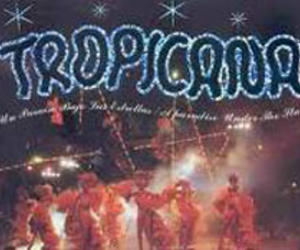The connection between Havana, Cuba and Las Vegas
- Submitted by: manso
- Travel and Tourism
- 11 / 10 / 2010

Monday November 8, 2010 4:24pm PST.Jim Snyder reporting. It’s a rare, close-up look at a world most of us have never seen. Last month, News 3’s Jim Snyder had the opportunity to travel to Cuba under circumstances which allowed him fairly unrestricted access to observe life in Havana.
Jim obtained approval from the U.S. State Department, but because he wasn’t there on a journalist visa, tried to be inconspicuous whenever possible, shooting all video with a cell phone and small Flip camera.
You might be asking yourself why a reporter from Las Vegas is so interested in Havana. As it turns out, our cites have a very close connection, from the casinos built by American mobsters here and there, to the boom and bust cycles of an economy based on tourism.
In many ways, Havana was the birthplace of the modern Las Vegas.
The 10 pm show at the Tropicana is replete with songs, showgirls, dance numbers and Cirque du Soleil-type acrobatics. You might think you’re in a showroom on the Las Vegas Strip, but that’s not the case. It’s the Tropicana in Havana, Cuba.
“For people from Las Vegas, they have to realize when they see this show, that from this show everything grew in Las Vegas,” boxing promoter and Las Vegas resident Bob Arum explains. “All the shows that happened in Las Vegas were modeled after the shows at the [Havana] Tropicana. Meyer Lanksy was the one that financed the people who made Las Vegas… Las Vegas.”
Arum was among a group of 24 from the Las Vegas Valley who traveled to Cuba. It’s not by accident that he mentioned Meyer Lansky. Lansky’s historical significance to Las Vegas is well known, but what you may not know is that he was also in bed with Fulgencio Batista, the brutal dictator who ran Cuba before Fidel Castro.
That relationship was exposed in Life magazine in 1958, nine months before Castro toppled the Batista government.
The mob’s relationship with Batista was depicted in a famous scene from the movie The Godfather Part II.
“Lansky was opening up a beautiful hotel called the Riviera and he had his own casino at the Riviera,” said lifelong Cuban resident Elian Rubio. “At the same time, there were two or three more; the Tropicana had its own casino [and a] very famous nightclub from 1939.”
Rubio speaks fluent English and loves his New York Yankees hat, but has never been off the island. He works for the Castro government and served as tour guide.
His current employment didn’t stop him from talking about the pre-Castro glory days of Havana, the 1950s.
“This was the land of sin and the land of gambling. This was the place.”
The center of that land of sin was the Riviera. In snapshots we took of the hotel/casino built by Lansky, you can still get a feel for the 1950s-style décor, all the way out to the pool with the famous multi-tiered diving board.
Lansky wasn’t the only major influence on modern Las Vegas. Santo Trafficante, Lucky Luciano, Moe Dalitz and several others were major players in the Havana casino scene.
“The National had a casino and the Capri a couple blocks away [had one as well]. Santo Trafficante, Jr. ran the whole thing and he was operating the casino at the Capri,” Rubio explains.
This is where the histories of Las Vegas and Havana fit together like puzzle pieces.
“All the underworld was amazing,” Rubio continues.
Jim Snyder: And in fact, this is one of those things Castro was able to point at: these American mobsters, they’re coming here, they’re taking our money, they’re not giving anything back. Can you talk about that?
“Basically he felt that Cuba was America’s backyard and we were losing authenticity; we were losing our identity and it was time to do something about this because Batista was letting the mobsters control the country because he was getting a big slice of the pie.”
“And he [Batista] was becoming a very rich man. He didn’t care whether Lansky, Luciano or Trafficante were here running the whole show if he could just get a little slice of the pie. He was in heaven. He was absolutely in heaven.”
And so was the American mob conglomerate, which was raking in millions until it all came crashing down.
“Things were chaotic… chaotic,” Rubio recalls. “That’s why Fidel, tried to make a revolution and a radical change to turn the whole thing around.”
When Castro took over, he ran the mob out of Havana. Those gangsters had a taste of the fortunes to be made in legal casinos and were hungry for more. They doubled down in Las Vegas.
The mob not only got a taste for the easy money in Havana, they also learned the tricks of the trade when it came to keeping tourists coming back to hand the money over.
“This is the birthplace of the great, great shows that we had in the 60s and 70s and later on,” said Arum. “This is where it all happened, in Cuba.”
Jim Snyder: So people think that Vegas was the start and Cuba copied it, but it was the other way around?
“It was the other way around. It all started here in Cuba and when Batista was overthrown by Castro in Cuba a lot of the same people came to Vegas and made Las Vegas into what it became. But it all started in Cuba.”
Bob Arum didn’t read that stuff in a book, he lived it as a young lawyer partying in Havana back in 1957.
Source: www.mynews3.com/story.php?id=31498
Comments